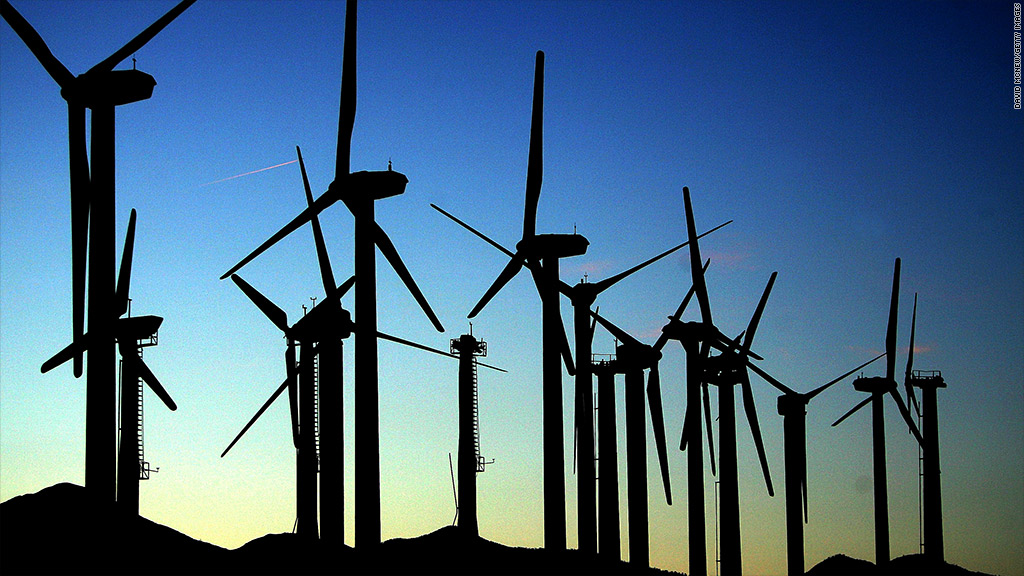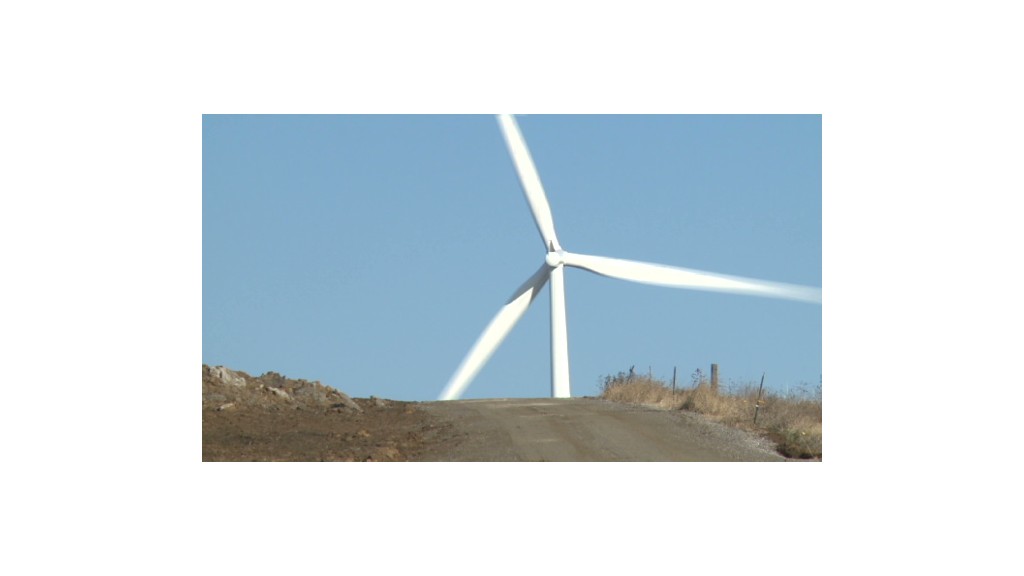
The wind industry has a deal for lawmakers negotiating a fiscal cliff compromise: they're willing to sacrifice their tax credit for deficit reduction, as long as it's not snatched away too quickly.
Wind turbine makers say they're OK with an industry plan to gradually phase out its tax credit over six years -- provided lawmakers extend it immediately.
The wind industry has been fretting that its tax credit - which covers about 30% of the cost of wind power -- won't be renewed when it expires at the end of 2012. The industry says up to 37,000 jobs are on the line if the credit expires.
In a bid to prevent that from happening, the American Wind Energy Association said last week that the industry can compete against other power sources like coal and natural gas by 2018, so long as the credit doesn't disappear before then.
Without subsidies of any kind, new natural gas plants are still about 35% cheaper than wind, according to the U.S. Energy Information Administration.
"We need to close that gap," said Steven Lockard, chief executive of TPI Composites , a Scottsdale, Ariz.-based company that makes wind turbine blades. "Costs have come down 90% in the last two decades, but our job is not done yet."
TPI grew out of a small Rhode Island boat builder that found its expertise in fiberglass construction also transferred to blade manufacturing.
Now it employes over 2,500 people in Mexico, China, Turkey and Iowa making blades for big turbine companies including General Electric (GE) and Mitsubishi (MHVYF). The Iowa plant is in the same town that housed a now-closed Maytag factory.
"The wind industry really has been a U.S. manufacturing success story," said Lockard, noting that it supports over 75,000 jobs nationwide and $15 billion investment annually. "It would be a shame to lose that momentum."

By offering to give up the tax credit eventually, the wind industry is doing its part to reduce the deficit, said Ellen Carey, a spokeswoman for the wind association.
"We need to be leaders in the fiscal challenge facing our country," she said.
Carey said new technology that makes blades bigger and lighter, and efficiencies in the manufacturing process mean the industry will be able to compete subsidy free by 2018. A predicted rise in the cost of natural gas will help too.
Yet others doubt those claims, and say the subsidy should be eliminated now before more tax dollars are wasted.
Related: One fiscal cliff fix: Raise the gas tax
They say wind power is fundamentally flawed, as the wind blows stronger at night when the power is needed least. As of now, there is no cheap way to store that power.
"Given our current fiscal condition, there is no way taxpayers can pump that money into an energy source that is intermittent, unreliable and uncompetitive," said Ben Cole, a spokesman at the Institute for Energy Research.
Just how much federal money goes to support wind? That's hard to say.
The Joint Committee on Taxation said extending the wind credit will cost an additional $1.4 billion per year for each of the 10 years the new wind developments are eligible to receive it.
Yet that doesn't count the cost of projects built in previous years, which taxpayers are still subsidizing.
In 2010, nearly $5 billion in federal money went to wind subsidies, according to EIA, although the agency said that number was particularly high due to stimulus efforts. In 2007, the agency noted that just $500 million went to wind.
Cole said extending the wind subsidy for six years could cost as much as $55 billion over 16 years -- or roughly $3.4 billion per year -- verses eliminating it now.


